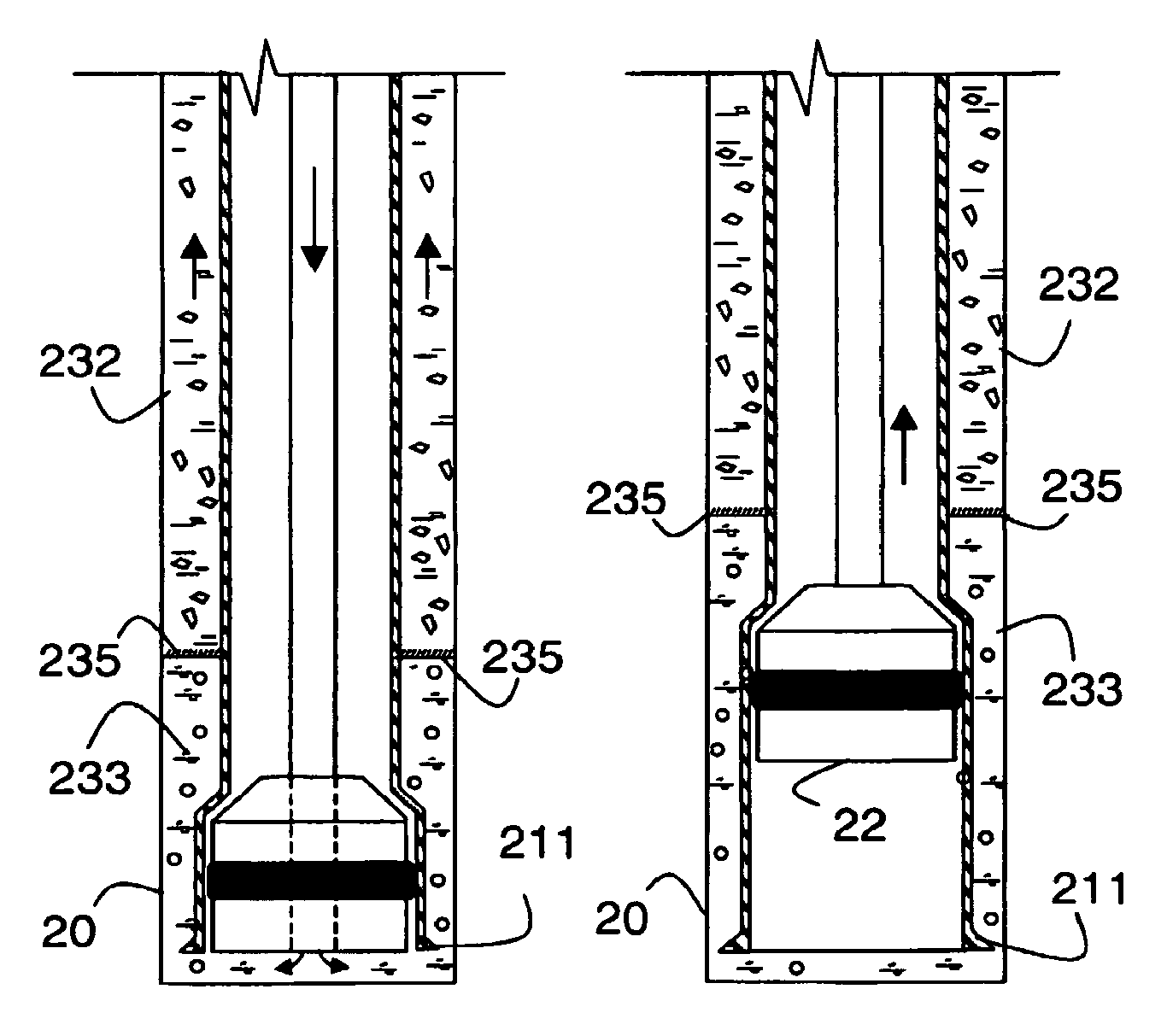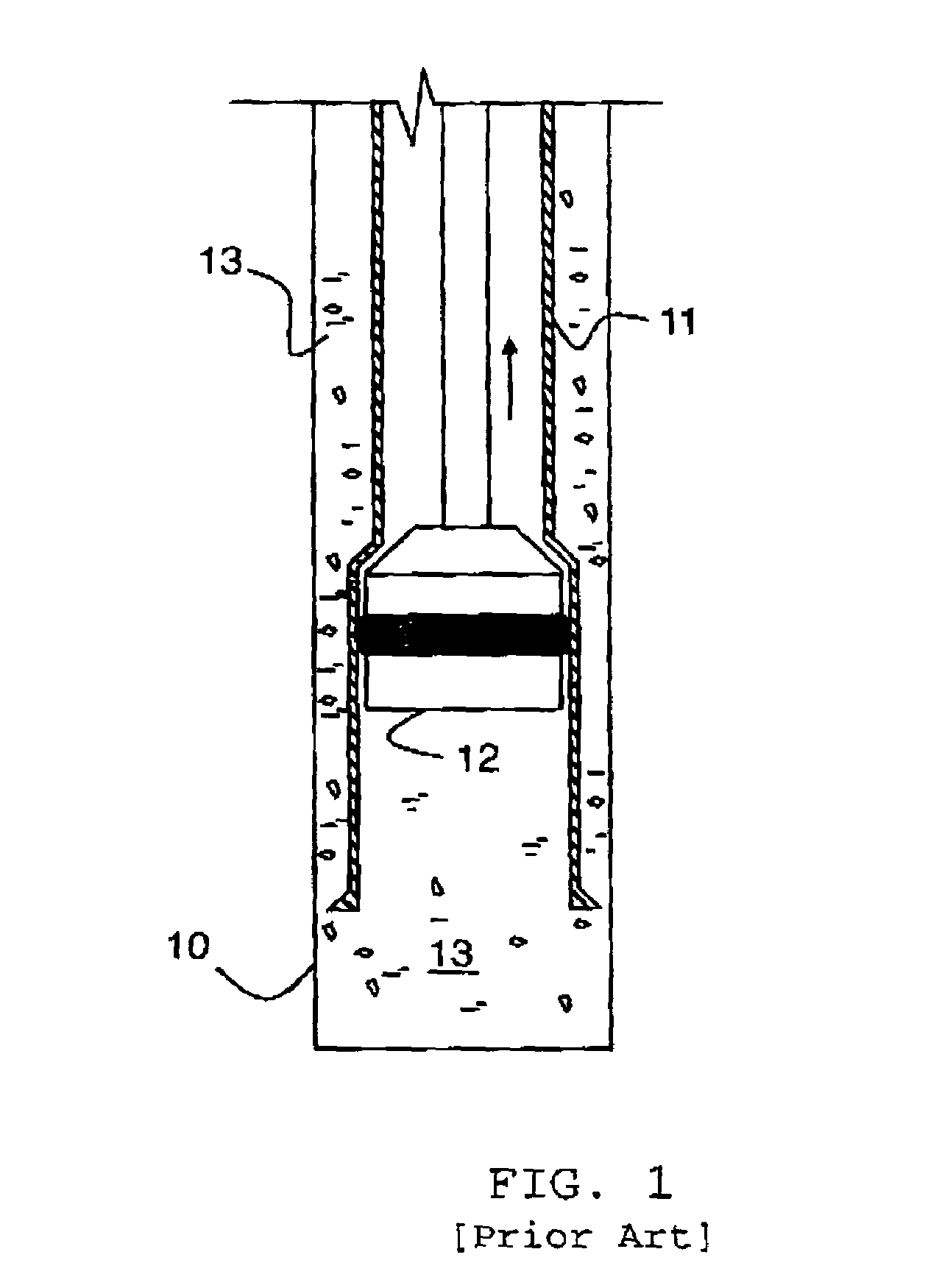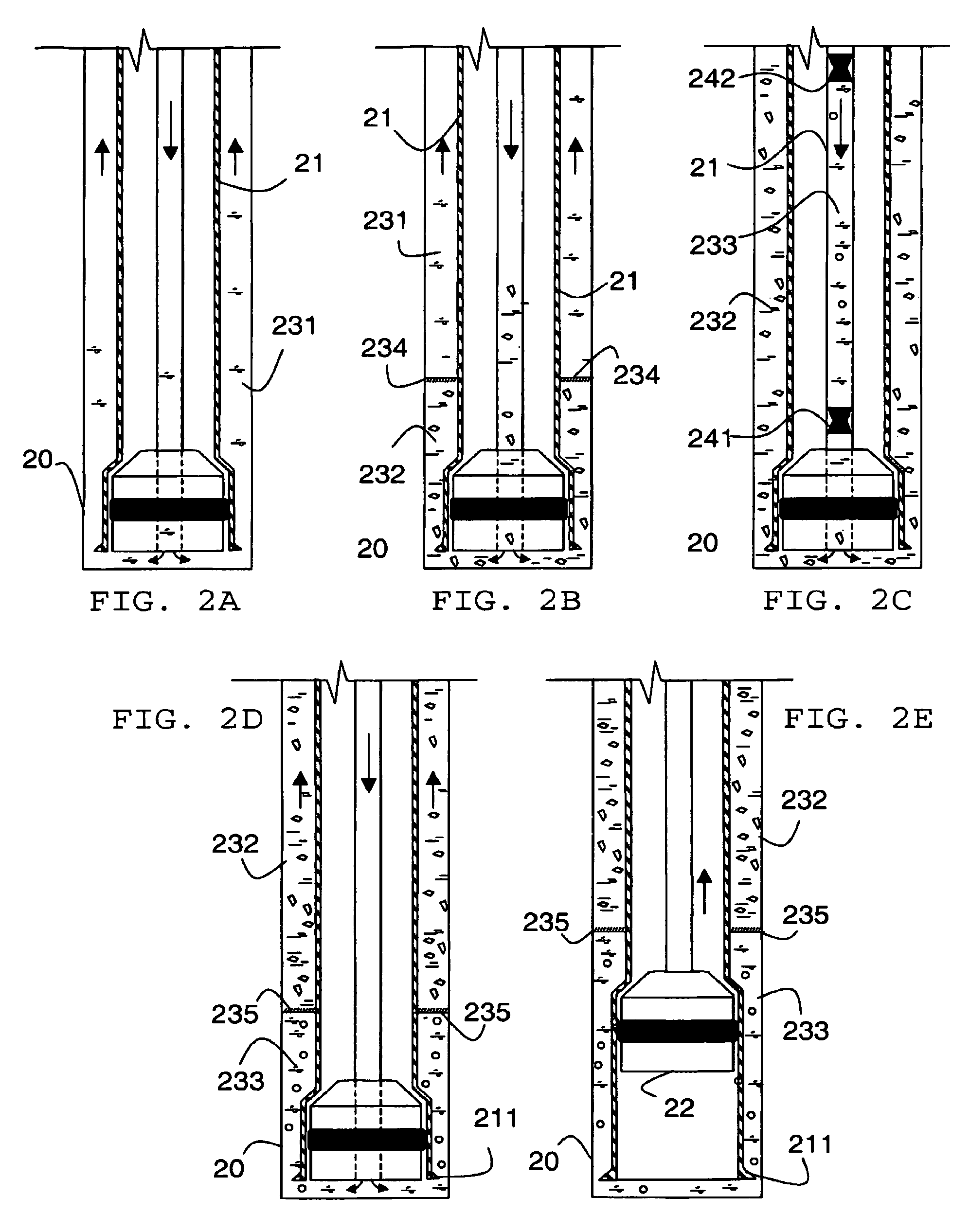Method of cementing expandable well tubing
a well tubing and cementing technology, applied in the direction of wellbore/well accessories, ceramicware, applications, etc., can solve the problems of difficult to achieve satisfactory mud displacement, new challenges in cementing, and cement often does not produce reliable seals, etc., to achieve suitable d, increase compressibility, and low viscosity
- Summary
- Abstract
- Description
- Claims
- Application Information
AI Technical Summary
Benefits of technology
Problems solved by technology
Method used
Image
Examples
Embodiment Construction
[0023]Before describing an example of the present invention, the basic expandable liner operation as known is illustrated with reference to FIG. 1. There is shown the bottom section 10 of an open borehole. In the open hole a solid expandable liner 11 is run through existing casing or liner, positioned in the open hole 10, then expanded using a mandrel or expansion cone 12 from the bottom up. At the top (not shown) the expansion cone 12 reaches the overlap between the expandable open hole liner 11 and existing pipe string (not shown), the cone expands a special hanger joint to provide a permanent seal between the two strings. The annulus between the borehole 10 and the liner 11 is filled with cement material 13, which after setting is designed to provide a seal between the formation and the liner.
[0024]Detailing now steps in accordance with an example of the invention, FIG. 2A shows a drilled hole 20 filled with drilling fluid 231. An expandable tubing (casing) 21 is first lowered in...
PUM
| Property | Measurement | Unit |
|---|---|---|
| temperature | aaaaa | aaaaa |
| plastic viscosity | aaaaa | aaaaa |
| yield stress | aaaaa | aaaaa |
Abstract
Description
Claims
Application Information
 Login to View More
Login to View More - R&D
- Intellectual Property
- Life Sciences
- Materials
- Tech Scout
- Unparalleled Data Quality
- Higher Quality Content
- 60% Fewer Hallucinations
Browse by: Latest US Patents, China's latest patents, Technical Efficacy Thesaurus, Application Domain, Technology Topic, Popular Technical Reports.
© 2025 PatSnap. All rights reserved.Legal|Privacy policy|Modern Slavery Act Transparency Statement|Sitemap|About US| Contact US: help@patsnap.com



